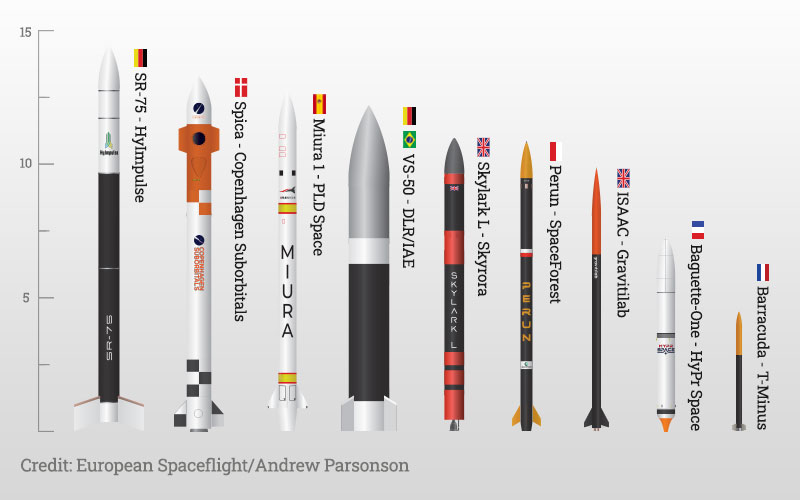
The German space agency DLR has formed a new team under its Mobile Rocket Base (MORABA) department to oversee the development of the VS-50 “very heavy lift” sound rocket.
The VS50 project is part of a joint initiative between DLR and Brazil’s Institute of Aeronautics and Space (IAE). Under the initiative, Brazil will develop its three-stage VLM rocket, which will be capable of deploying payloads of up to 150 kilograms to low Earth orbit at an altitude of 300 kilometres. The two-stage VS-50 sounding rocket will be utilized by DLR and will be capable of carrying scientific payloads with a mass of up to 1,500 kilograms to altitudes above 1,400 kilometres. It will also be used for hypersonic experiments.
On 13 June, DLR announced that it had formed an interdisciplinary group to realize the hardware-intensive manufacturing and testing phases of the VS-50 project. According to team leader Frank Scheuerpflug, with funding now “finally secured,” the new group will focus specifically on completing Phases D and E of the project.
IAE is responsible for developing and testing the S50 first stage and S44 second stage solid fuel motors. DLR teams will be tasked with integration and the development of several subsystems, including the rocket’s tail structure and mechanical separation system.
An initial test flight of the VS-50 sounding rocket is currently slated to take place in 2026.
One of the rocket’s future payloads is the HEXAFLY glider. The HEXAFLY aims to create a platform to test several technologies with the aim of further the development of civil high-speed passenger transportation for long0haul intercontinental flights.
Update: A previous version of this article incorrectly stated that MORABA was a DLR programme, that the the inaugural test flight of VS-50 would take place this year, and that one of the rocket’s payloads would be the SHEFEX III demonstrator.




